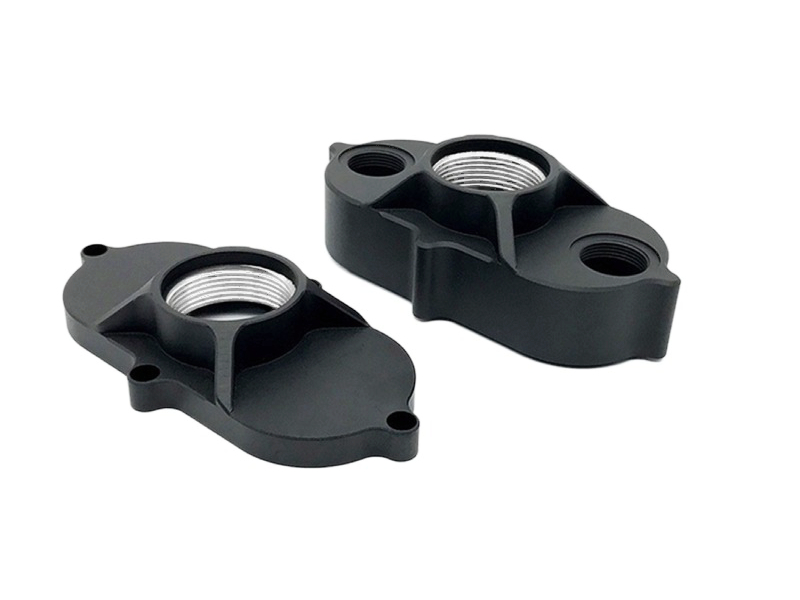Heat Treatment for Aluminum Die Castings: Strengthening and Hardening for Better Performance
Introduction
Aluminum die casting is a go-to manufacturing method for producing complex, lightweight, and high-precision parts. However, as-cast aluminum—especially high-silicon die casting alloys like A380, A413, and AlSi12—often has limited strength and ductility in its raw state. Heat treatment offers a powerful solution to enhance these mechanical properties through controlled thermal cycles that modify the metal’s microstructure.
At Neway, heat treatment is available as a value-added post-processing service, helping industries like automotive, aerospace, and industrial machinery achieve higher-performance components.
What Is Heat Treatment for Aluminum Die Castings?
Heat treatment for aluminum involves heating the casting to specific temperatures to dissolve and redistribute alloying elements such as silicon, copper, or magnesium. This is followed by quenching (rapid cooling) and aging (controlled reheating) to develop desired strength and hardness.
Key Heat Treatment Tempers for Aluminum Castings
Temper | Process Description | Typical Mechanical Effects |
|---|---|---|
F (As-Cast) | No treatment | Baseline strength, low ductility |
T5 | Artificial aging after rapid cooling from die | Increases yield strength, reduces residual stress |
T6 | Solution heat treatment + quench + artificial aging | Maximizes tensile strength and hardness |
T7 | Over-aging for dimensional stability and corrosion resistance | Reduces strength slightly, improves thermal fatigue performance |
Mechanical Properties After Heat Treatment
Property | As-Cast A380 | A380-T5 | A380-T6* |
|---|---|---|---|
Tensile Strength (MPa) | 310 | 345–360 | Up to 380 |
Yield Strength (MPa) | 130 | 160–175 | 190–210 |
Elongation (%) | <1.5 | 2.0–3.0 | 3.5–4.5 |
Hardness (Brinell) | ~80 | ~90 | ~100–105 |
*Note: Not all aluminum die casting alloys respond well to T6 due to porosity and silicon content. T5 is typically used for A380, while T6 is more common with alloys like A356 made via permanent mold or sand casting.
Benefits of Heat Treating Aluminum Die Castings
Performance Area | Improvement | Application Value |
|---|---|---|
Mechanical Strength | Tensile and yield strength ↑ 10–25% | Ideal for load-bearing structures |
Thermal Resistance | Reduced warping and distortion | Supports high-temperature applications |
Dimensional Stability | Improved creep resistance in T7 | Ensures tight tolerance over time |
Wear Resistance | Hardness increase via precipitation hardening | Extended part life under frictional loads |
For example, T5-treated A360 alloy parts used in electric motor housings offer higher resistance to thermal cycling, reducing the risk of microcracking during continuous operation.
Common Applications of Heat-Treated Aluminum Castings
Heat treatment is especially beneficial for:
Automotive: Transmission housings, cylinder heads, shock towers
Aerospace: Brackets, airframe connectors, enclosure housings
Industrial Equipment: Pneumatic control valves, mounting plates, gearboxes
Electronics: Heat sinks, sensor bodies, protective housings
In a case study involving T5-tempered A413 pressure casings, fatigue life improved by over 40% compared to untreated parts during cyclic loading tests.
Limitations and Considerations
While heat treatment offers many advantages, not all aluminum die castings are suitable for T6 or other high-temperature cycles:
Porosity Sensitivity: Rapid solidification in die casting can trap gases, making castings prone to blistering during heat treatment
Alloy Selection: High-silicon alloys (e.g., A380, AlSi12) are less responsive than magnesium-rich or eutectic compositions like A356
Dimensional Shifts: Precision parts may require re-machining or fixturing during heat treatment to control distortion
At Neway, heat treatment strategies are tailored to alloy type, part geometry, and application requirements to maximize benefit while minimizing processing risks.
Integration with Other Finishing Processes
Heat treatment is typically performed before final machining, coating, or surface treatments. It is often integrated with:
CNC Machining: Ensures final dimensional precision after part hardening
Clear Coating: Protects treated surfaces from oxidation and wear
Anodizing or Plating: Improves adhesion and enhances surface functionality post-hardening
Stress Relief Annealing: Optional step before or after machining to reduce residual stress
FAQs
Which aluminum die casting alloys respond best to T6 heat treatment?
Can heat treatment be applied to thin-walled or complex geometry parts?
What’s the difference between T5 and T6 in terms of mechanical properties?
Does heat treating aluminum die castings cause dimensional distortion?
How does heat treatment affect the surface finish and coating compatibility?

